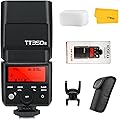Shutter Speed Explained: Improve Your Photography Now
Don Orkoskey | September 8, 2024
Understanding shutter speed is essential to controlling the amount of brightness in your photos. Additionally, shutter speed allows you to freeze or show motion. This is because shutter speed is what we call the amount of time our sensor is exposed to light.
Shutter Speed = Time

Shutter speed dial | Photo by Nathan J Hilton on Pexels.com
In photography the shutter in our camera opens to allow light to be recorded by our sensor. As such, the more time it's open, the more light is recorded. Additionally, the greater amount of time we use may allow for moving objects to be recorded in motion.
In other words, if the shutter speed is low the image will be brighter. However the chances that anything moving will be blurry are greater.
In addition, if we're holding the camera (vs. it being on a tripod) we may move the camera somewhat resulting in the entire photo being blurry.
Shutter Speed Measurements
Shutter speed is a form of measurement. It measures the amount of time our sensor is exposed to light. Generally, we use fractions of a second or whole seconds to set our shutter speed.
Fractions of a second
Using fractions of a second allows us to add twice the amount of light by doubling the amount of time. Conversely, it allows us to take away half the light. For example, a half-a-second shutter speed allows half as much light to be recorded as a full second. Equally, a 500th of a second allows half as much light to be recorded as a 250th of a second.
Remember shutter speed is measured in fractions.
Why do we do this? We want to be able to freeze or show motion and to add or take away brightness. However, sometimes we want to keep the brightness the same but freeze motion. Therefore, we can use less time with a faster shutter speed then compensate for the loss of light with our other exposure settings.
Other Exposure Settings
Shutter speed works with our other exposure settings because they too add or subtract light by doubling or cutting the amount in half. Therefore if we need to keep the brightness the same but freeze motion we can. To do this we use a faster shutter speed which will take away brightness. Then we use a wider opening (aperture) or a higher ISO (sensitivity) to return the brightness level to where we want it.
Ultimately, because our exposure settings add or subtract light fractionally it makes it easy for us to take light away in one way and add it back in another.
Pocket Photography Guide
If you are just learning photography then a pocket photography guide will be really helpful. Toss this in your camera bag. Then, if you forget something you can quickly look it up.
Be sure to check out our other articles on beginners photography and consider signing up for our mailing list for more great tips.





























